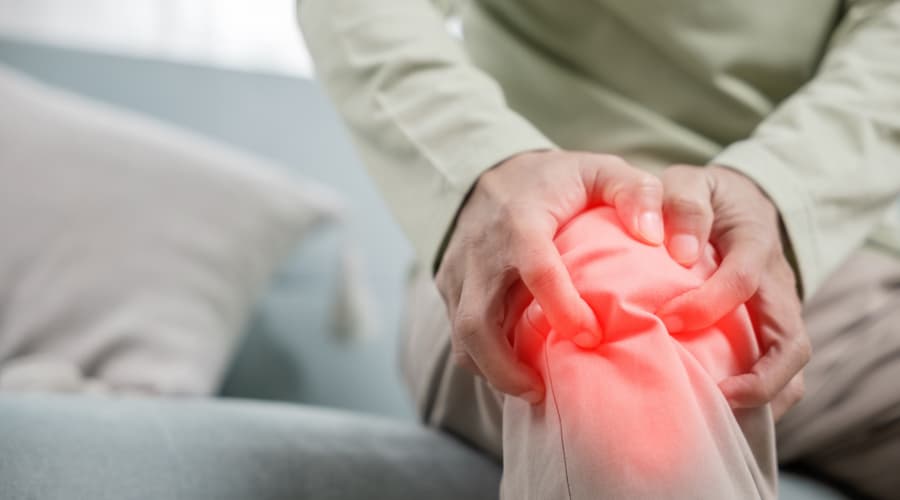Lower back pain can be caused by various things, including muscle spasms, sciatica, or repetitive stress. While the symptoms are often similar, there are some key differences that you should be aware of if your lower back pain is accompanied by numbness in one leg. For example, if you have numbness in one leg but not the other, it may indicate spinal stenosis. If you have both symptoms, this could point to sciatica.
How to Treat Lower Back Pain with Numb Leg?
Lower back pain accompanied by numbness in one leg can be challenging to diagnose. You should also see your chiropractor, especially if you have been experiencing symptoms for longer than two weeks. If standard tests do not reveal what’s causing your lower back pain, then it may be time for more advanced diagnostics but most people that experience this type of low back pain recover within eight weeks.
If you have been experiencing numbness in one leg for longer than two weeks, you must see your doctor right away, as this could be a sign of neurological damage. If the pain and numbness intensify or spread to other parts of your body, then seek medical attention immediately, especially if they travel down into your legs. You should also contact a chiropractor because lower back pain accompanied by numbness can cause severe problems with proper nerve function.
What Are The Treatments?
The most obvious treatment for lower back pain accompanied by numbness in one leg is rest. You should avoid sports, heavy lifting, and repetitive bending/twisting of your body. Also, try to sleep on a hard surface since this can put less stress on the spine than a soft mattress (the softer it is, the more pressure will be applied). If you are experiencing severe discomfort or unable to walk normally due to muscle spasms, use heat treatments with moist towels or take an Epsom salt bath. Not only do these help loosen up tight muscles, but they also relax ligaments that may have become inflamed due to overuse injuries caused by improper posture during everyday tasks like sitting at work, long drives, or standing for long periods.
Chiropractic care is one of the most effective treatments for lower back pain with numbness in one leg. Chiropractors will perform a thorough examination to determine the cause of your symptoms and then use various techniques such as spinal adjustments, massage therapy, and electrical stimulation to help relieve your discomfort. If conservative methods do not work, then surgery may be recommended, but this is only done in cases where there is severe nerve damage or compression.
If you are experiencing lower back pain accompanied by numbness in one leg, it’s essential to see your doctor right away for proper diagnosis and treatment. While most people recover within eight weeks, some require more advanced treatments like surgery. Chiropractic care is a safe and effective way to relieve pain and restore function without drugs or surgery.
What is the Prognosis?
The prognosis for lower back pain with numbness in one leg is usually good. Most people who experience this discomfort improve within eight weeks with conservative treatments like chiropractic care, rest, and heat/ice therapies. If more advanced treatments are required, then surgery may be necessary, but this is only done in cases where there is severe nerve damage or compression. It’s important to see your doctor right away if you’re experiencing these symptoms so that the proper diagnosis can be made and treatment started as soon as possible.
What Are The Alternatives?
There are no alternative treatments for lower back pain accompanied by numbness in one leg. Chiropractic care is the most effective treatment, but it’s essential to seek immediate medical attention if you experience any unusual symptoms, especially if they travel down your legs and into other parts of your body, as this could be a sign that something more serious may be going on (like nerve damage). If conservative methods do not work, surgery may be recommended but only after an appropriate diagnosis.
How do I Prepare for Treatment?
There is no preparation needed before you begin treatment for lower back pain with numbness in one leg. Your doctor can tell you about any restrictions and the best course of action to take at home, depending on your specific diagnosis and treatment plan.
What Do I Need To Know Before And After Treatment?
It would be best to always talk to your doctor before and after treatment for lower back pain with numbness in one leg. They will let you know what medications are safe during this time if any changes need to be made at home, and how long it may take to experience a full recovery (this can vary from person to person).
The most important thing to remember is that no two cases of lower back pain accompanied by numbness in one leg are precisely alike, so the best way to determine what course of action would be best for each case is by being open about your symptoms, seeking timely medical attention, having an honest conversation with your doctor about all possible treatments while also considering your personal preferences and quality of life.
Is there a Generic Alternative to the treatment?
There are no generic alternatives available for lower back pain with numbness in one leg. You must speak with your doctor about your treatment options because they know what course of action would be best based on each case and the overall condition at hand.
Are There Any Risks Involved With The Treatment?
Again, it is imperative to talk with your doctor before beginning any treatment for this condition. Some symptoms may require more advanced treatments like surgery, which could involve risks such as infection or complications during recovery from the procedure itself (which can last several days). It would be best if you considered how much trouble you’re willing to take versus quality of life when making decisions about your treatment plan.
Is There A Test Or Procedure That Can Diagnose The Condition?
Yes, you’ll need a physical exam to diagnose lower back pain with numbness in one leg in most cases. Your doctor will ask about your symptoms and do some tests (such as an MRI or CT scan) on the affected area(s). They may also order blood work if they suspect another underlying medical condition could be causing it.
Related Articles
- Back Pain Emergency – Tunbridge Wells
- Managing your Back Pain
- Active Recovery from Chronic Back Pain and How to Help!
- Stay-at-Home Exercises for Your Back
- Lunge Stretch for Back Pain




























